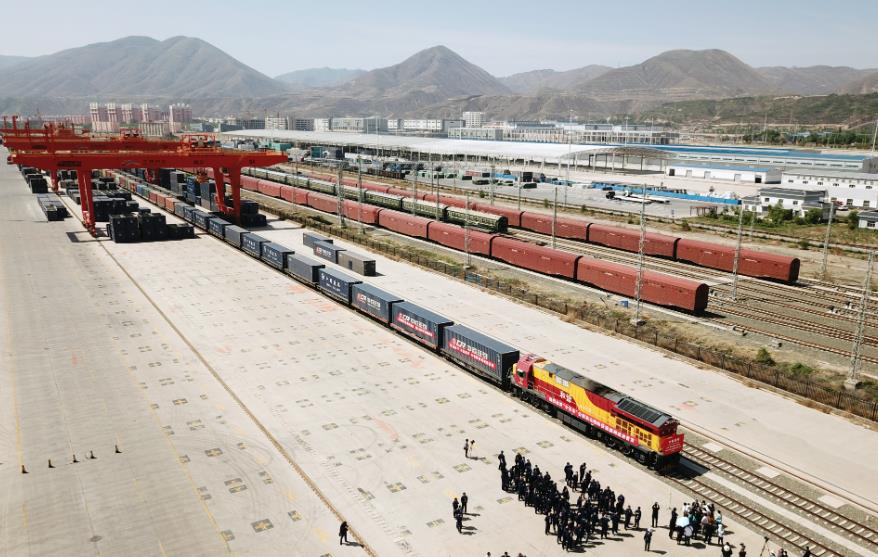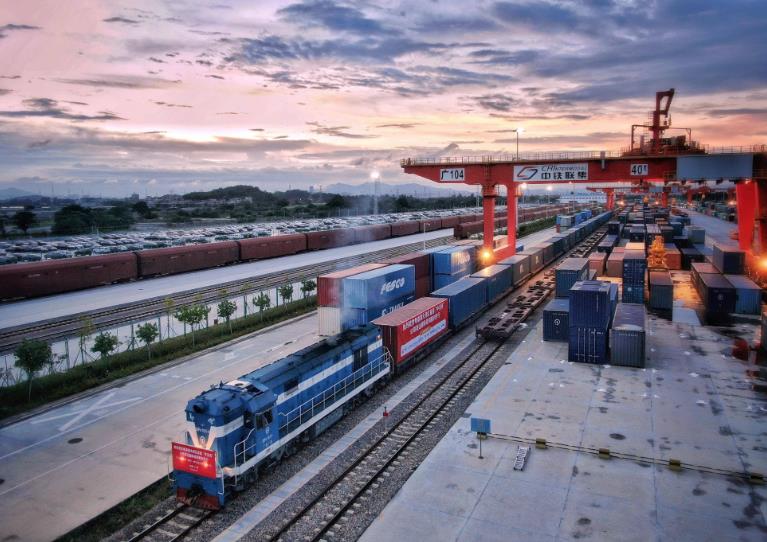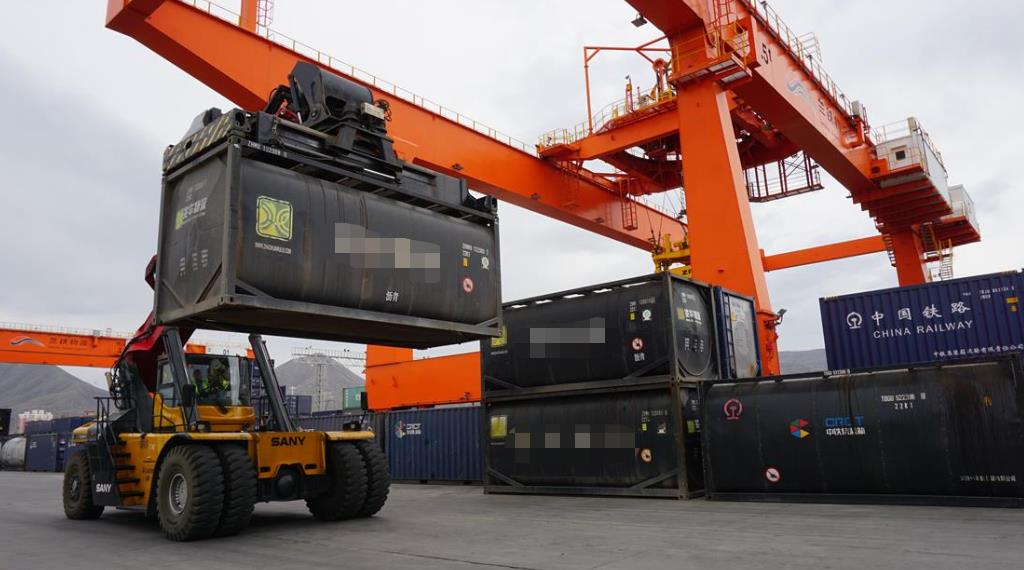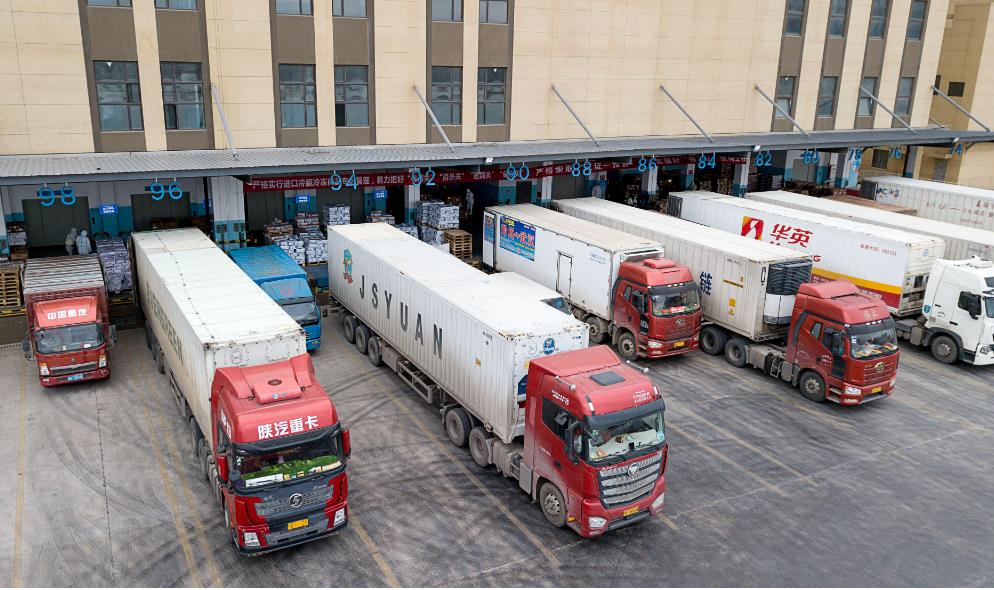NEWS CENTER
NEWS CENTER

Recently, the Ministry of Transport formulated and released the "Measures for the Supervision and Management of Railway Transport Service Quality", which states that it is necessary to improve the informatization and intelligence level of transportation services, encourage railway transportation enterprises to strengthen coordination and cooperation with other transportation mode enterprises, share information resources, and carry out multimodal transportation.
Road rail intermodal transportation is one of the multimodal transportation modes, where railways are responsible for long-distance mainline transportation, supplemented by short distance transportation by highways. These two modes of transportation connect and transfer each other, completing the transportation process together.

Compared with traditional road transportation methods, road rail intermodal transportation has low freight rates, strong timeliness, simple procedures, and unified responsibilities. It can also reduce the risk of goods being stolen during transportation, reduce energy consumption, improve transportation efficiency, alleviate urban traffic pressure, and further improve the environment.
The Background of the Rise of Rail Transit Intermodal Transport
Road rail intermodal transportation is not an emerging concept, and its application and popularization are very complete in many developed countries. Some countries even consider railways as the main force of freight transportation, actively developing a transportation structure with reasonable layout, each fulfilling its duties, and effective connection of various transportation modes such as railways, highways, and waterways.
On the other hand, due to various reasons, the domestic intermodal transportation of highways and railways started late, developed slowly, and faced many bottlenecks. However, in the context of logistics cost reduction, efficiency increase, and carbon reduction, the transfer of highways to railways has become an established trend. The legendary "iron boss" has also made up his mind to step out of the "golden house" and aggressively entered the market.

1. Environmental factors
Environmental issues are a global issue, and the logistics and transportation industry, as a major carbon emitter, is naturally a pioneer in reform. Although different modes of transportation can have an impact on the environment, the degree of impact varies. According to relevant data, under the same conditions, the transportation volume of railways is 5.2 times that of highways, while the carbon emissions of highways are 7.5-10.9 times that of railways. Therefore, increasing the proportion of railway transportation in the logistics industry is a feasible strategy to improve environmental quality.
2. Transport structure
The structural contradiction in China's transportation mode is prominent, with highways bearing too much of the transportation of medium to long distance goods and bulk goods. The average transportation distance has been increasing, but the average transportation distance of railways has been decreasing, resulting in an imbalanced and unreasonable transportation mode structure.
3. Logistics costs
In 2021, the total cost of social logistics in China accounted for 14.6% of the country's GDP, which is about 82.5% higher than the 8% in developed countries, and is at a relatively low international level. Railway freight transportation has significant advantages in the fields of price, speed, energy conservation, and environmental protection, and is an effective way to further reduce logistics costs and improve logistics efficiency.

4. Limitations of Highway Freight Transport
Although road transportation is flexible, simple, and convenient, compared to railway freight transportation, the transportation unit, transportation volume, number of vehicle operating units, and number of operators of road transportation are closely related, especially in the transportation of bulk goods, the cost is relatively high, and this disadvantage is more obvious in long-distance transportation.
5. Characteristics of Railway Freight Transport
Railway transportation is almost unaffected by climate, and can be operated regularly and accurately all year round, day and night. It is fast and has a large volume of transportation, which is equivalent to the freight volume of 100 heavy trucks. The transportation cost is only a few to ten times that of road transportation, and the fuel consumption is one twentieth of that of road transportation. Moreover, the safety level of goods is higher than that of road freight.
The advantages of rail and road intermodal transportation
The combination of highway freight and railway freight is equivalent to the combination of advantages of highway freight and railway freight. It can fully leverage the advantages of railway backbone transportation, as well as the flexible and fast "door to door" transportation characteristics of highway transportation. The procedures are simple, responsibilities are unified, goods are safe, transportation miscellaneous expenses are saved, transportation costs are reduced, transportation quality is improved, and transportation efficiency is guaranteed. At the same time, from the experience of developed countries, the development of multimodal transportation is also a necessary path to enhance the level of road freight intensification and scale.

Will the combined transportation of highways and railways seize the market of highway transportation?
In the road transportation market, which is already characterized by overcapacity, imbalanced supply and demand, and intense internal competition, a strong presence of railway freight will inevitably have a certain impact on the market. Especially for car owners who originally mainly operated medium to long-distance transportation, their market share will be to some extent seized by railway freight. After all, the longer the transportation mileage, the more obvious the advantage of railway freight.
However, preemption does not necessarily mean substitution. For shippers, the use of railway freight also has certain limitations, which cannot be compared to the flexibility of road freight. For some special goods, such as specialized transportation scenarios such as cold chain and green transportation, road transportation may also have to bear the burden.

Secondly, railway freight is greatly affected by line coverage, and goods cannot achieve "door to door" services. Therefore, both ends of railway freight require road transportation for connection. The railway's cargo loading capacity is large, and the transportation pressure of cargo transfer will also increase, which may require more medium and short distance freight vehicles to share. Therefore, medium and short distance transportation may become the main field of future road freight transportation.
However, as the market share of long-distance freight is divided, do the car owners who cannot obtain the supply of goods choose to withdraw from the freight market or will they choose to re-enter the medium and short distance transportation market? This also determines the direction of pressure in the medium and short distance transportation market, and will it become more intense? Or is it relieved?
It is worth noting that in the trend of exclusive use of special vehicles, shippers may be more picky in their choice of vehicles. During the distance between delivering goods from the dock or freight station to the shippers, the more professional and detailed the vehicle model, the more popular it may be. Therefore, car owners should not blindly favor the "all-in-one" model.
In addition, after the combined transportation of highways and railways, it is not recommended for individual car owners to fight alone, because the "small, scattered, and disorderly" transportation mode does not have advantages in transportation costs, transportation efficiency, and capital flow under the trend of efficient, intensive, and orderly transportation. Therefore, choosing to huddle together for warmth or relying on logistics enterprises to seek survival and development is also a choice direction.
ONLINE MESSAGE
 24-hour consultation telephone
24-hour consultation telephone
400-6363-989
If you have any needs, you can contact us
CONTACT US
Customer Service Hotline:400-6363-989 Company Address:No. 2, Guoyuan Road, Industrial Park, Quanpu Town, Liangshan County, Jining Cityall rights reserved Darong traffic machinery Co., LTD Lu ICP No. 20025388-2